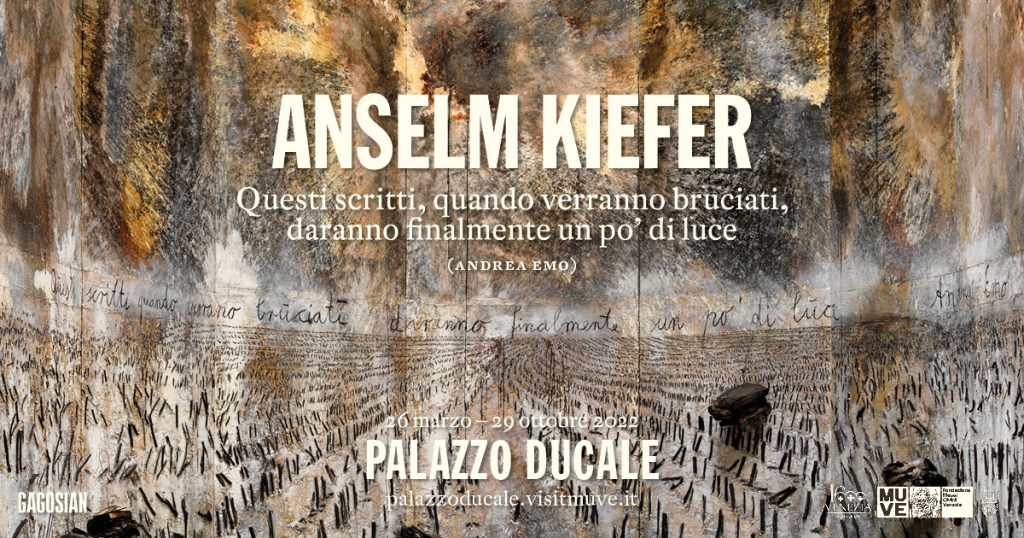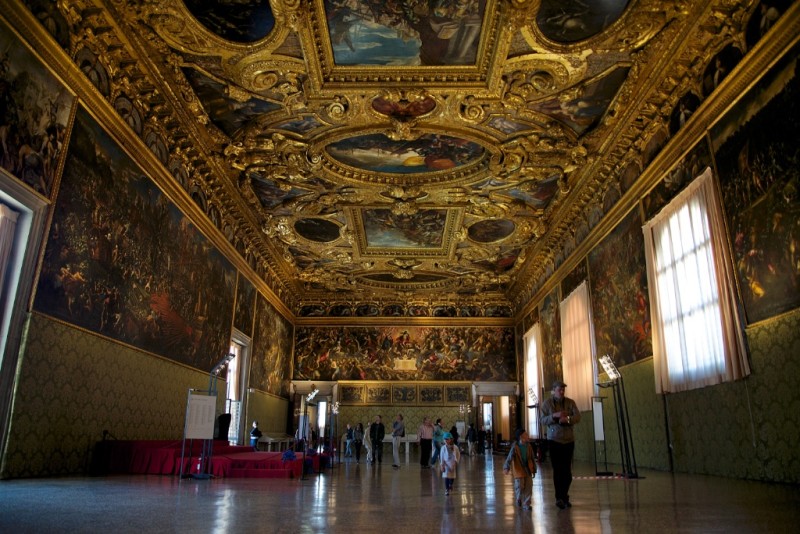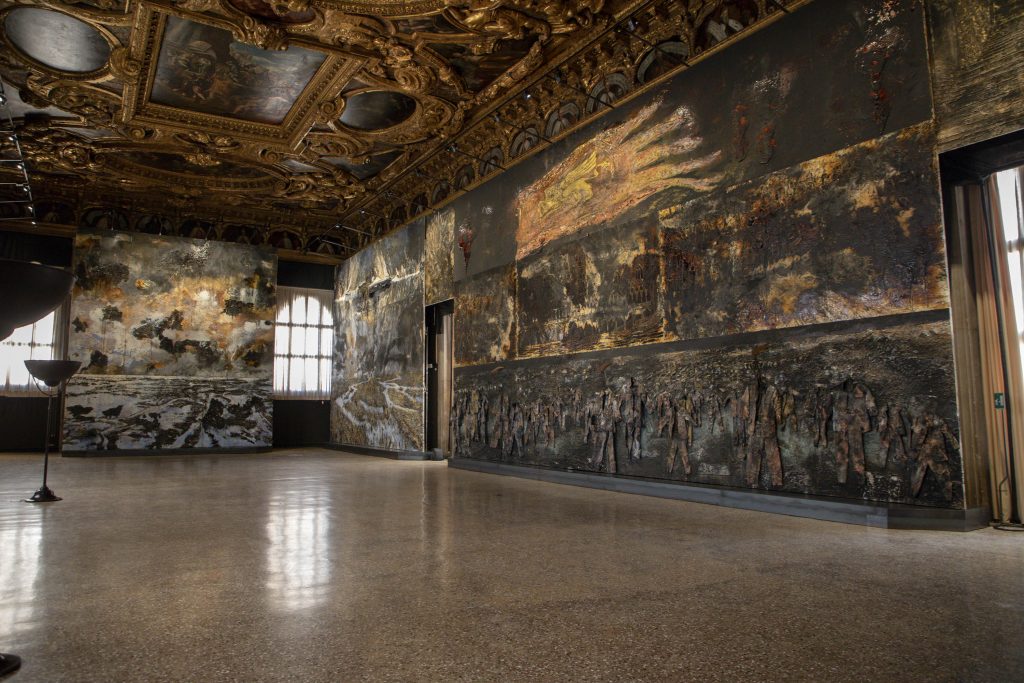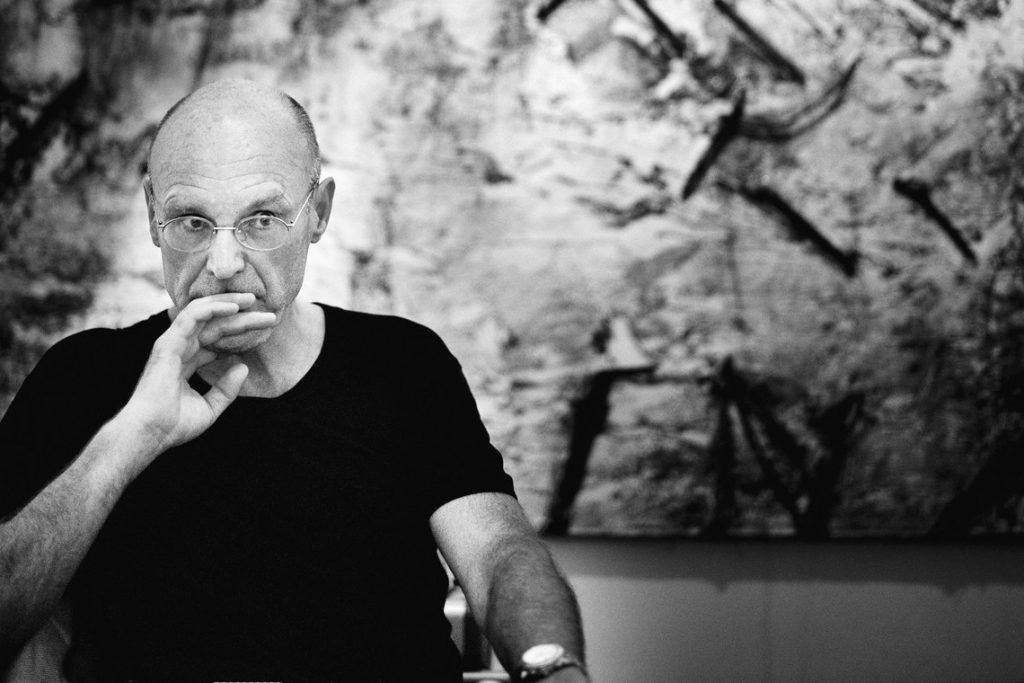The Frank Stella You Thought You Knew
You may know Frank Stella from the brightly colored, shaped canvas paintings in his Protractor series from the late 1960s to early 1970s. However,...
Marva Becker 11 July 2024
Apart from the Biennale that is taking place in the Venetian Giardini at the moment, Venice never ceases to offer stunning exhibition spaces for contemporary artists. Anselm Kiefer (b. 1945), a German painter, sculptor, and installation artist, whose works you can find on display in Peggy Guggenheim Venice, was first invited in 2019 to decorate one exquisite room of one of the most prestigious buildings in Venice, the Doge’s Palace (Palazzo Ducale). Known for very tactile works, this site-specific exhibition features some burning writings, straw, and shoes…

Poster for the exhibition Anselm Kiefer at the Doge’s Palace, Venice, Italy. Museum’s website.
Anselm Kiefer has been working on this series of gigantic paintings since 2020, which touch upon such themes as the role of artists in the contemporary world, the reflection on Venetian history, and the role that Venice played in the creation of art. Kiefer was commissioned to celebrate the 1600th Anniversary of the Foundation of Venice.
The works are all installed in one spacious room of the Sala dello Scrutinio, engaging closely with the original 33 historical paintings by Jacopo Tintoretto, Palma il Giovane, and Andrea Vicentino, who painted the scenes of Venetian triumph on the ceiling after the city fire of 1577. After almost 300 years, it was the first time that something else has been superimposed over the original paintings. Historically, something like that happened when the Doge and significant nobles dictated the change of tastes or needs of the Republic.

Sala dello Scrutinio, 15th century, Doge’s Palace, Venice, Italy. Mike’s Travel Guide.
As the original paintings were installed after the fire had destroyed earlier decorations, Kiefer’s paintings offer a commentary on the potential of fire, which by burning destroys and also creates. This explains the motto he has selected for this exhibition from the writings of a Venetian philosopher, Andrea Emo: “Questi scritti, quando verranno bruciati, daranno finalmente un po’ di luce” (in English “These writings, when burned, will finally cast a little light”).
Kiefer comments on life’s cyclical nature — how the previous paintings burnt, so his will be destined for the trash once the exhibition is over. However, he also points out that sometimes positive effects can emerge from the cancellation of something else, of the past.

Installation view: Exhibition Anselm Kiefer at the Doge’s Palace, Venice, Italy. Photo by Andrea Avezzù. Weltkunst.

Installation view: Exhibition Anselm Kiefer at the Doge’s Palace, Venice, Italy. The Washington Post.
I was wowed when I first entered the Sala dello Scrutinio filled with Kiefer’s tactile canvases which engage with the original room from the chromatic and thematic points of view. It was moving to see how much work he put into the creation of these enormous, engaging installations. Each canvas tells a story on its own, but when put together, they all are elements of a tale of the cycle of life, the history of humanity, and history of Venice, which is a perfect metaphor for the passage of time itself. As the glory of once unbeatable Serenissima Republic is now faded, it helps retell the story of cultural exchanges, trade passages between East and West, and the stratification of myths and universal symbols.

Anselm Kiefer. Photo by Peter Rigaud c/o Shotview Syndication. Gagosian.
Anselm Kiefer had completed a law degree before deciding to switch to making art. He turned to found objects and organic material like straws, plants, and clothes to comment on his World War II trauma and the post-war German identity. His works often refer to philosophy, Jewish mysticism, music, and literature. His main areas of interest are mechanisms of collective memory, cultural exchanges between East and West, and relationships between this universe’s macrocosm and humans’ microcosm. He moved to France in the 1990s where he built his studio which is constructed of a network of underground corridors connecting many of his installations.
I really recommend you visit this striking exhibition when in Venice. It will be displayed in the Doge’s Palace until October 29, 2022.
DailyArt Magazine needs your support. Every contribution, however big or small, is very valuable for our future. Thanks to it, we will be able to sustain and grow the Magazine. Thank you for your help!